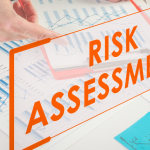Executive Summary
-
Predictive analytics is revolutionizing financial risk management by leveraging data-driven insights.
-
Financial institutions are increasingly adopting predictive models to anticipate and manage risks.
-
Real-world examples showcase the transformative impact of predictive analytics on risk mitigation.
-
Expert insights reveal the best practices and tools available for implementing predictive analytics effectively.
Introduction
In a rapidly evolving financial landscape, the ability to anticipate and mitigate risks can be the difference between success and failure. Financial risk managers are turning to predictive analytics as a powerful tool to enhance decision-making processes. This shift is not just a trend but a necessity, given the increasing complexities and uncertainties in global markets. In this article, we will explore how predictive analytics is reshaping financial risk management, providing a comprehensive guide for risk managers to harness its potential effectively.
Definitions / Context
Predictive analytics involves using historical data, statistical algorithms, and machine learning techniques to identify the likelihood of future outcomes. In the context of financial risk management, it enables professionals to anticipate potential risks and take proactive measures. This approach is increasingly critical as financial markets become more interconnected and volatile.
Benefits / Pros
-
Enhanced Risk Identification: Predictive analytics allows for early detection of potential risks, enabling timely interventions.
-
Improved Decision Making: By providing data-driven insights, predictive models support more informed and objective decision-making processes.
-
Cost Efficiency: Proactively managing risks reduces the likelihood of costly financial losses.
-
Competitive Advantage: Institutions utilizing predictive analytics can respond faster to market changes, gaining an edge over competitors.
Risks / Cons / Challenges
-
Data Quality and Availability: The effectiveness of predictive models heavily depends on the quality and comprehensiveness of the data used.
-
Complexity and Implementation Costs: Developing and integrating predictive analytics solutions can be resource-intensive.
-
Regulatory and Ethical Concerns: Financial institutions must navigate regulatory frameworks and ensure ethical use of predictive analytics.
Step-by-Step Process
Implementing Predictive Analytics in Financial Risk Management:
-
Data Collection: Gather relevant historical and real-time data from multiple sources.
-
Model Development: Use statistical algorithms and machine learning to create predictive models.
-
Validation and Testing: Ensure model accuracy and reliability through rigorous testing.
-
Integration: Seamlessly integrate the predictive model into existing risk management systems.
-
Monitoring and Updating: Continuously monitor model performance and update as necessary to maintain accuracy.
A leading global bank implemented predictive analytics to enhance its credit risk management. By analyzing historical credit data and applying machine learning algorithms, the bank could more accurately forecast default probabilities. As a result, the institution reduced credit losses by 20% within the first year of implementation.
Expert Tips / Strategic Insights
-
Start Small: Begin with a pilot project to demonstrate the value and feasibility of predictive analytics.
-
Collaborate with Data Scientists: Leverage the expertise of data scientists to develop robust predictive models.
-
Stay Updated: Keep abreast of the latest developments in predictive analytics and regulatory changes to ensure compliance and effectiveness.
Tools / Resources / Calculators
-
DataRobot: An automated machine learning platform for building predictive models.
-
SAS Advanced Analytics: Offers a suite of tools for predictive analytics and data management.
-
IBM Watson Studio: Provides an integrated environment for data scientists to build and train predictive models.
Conclusion
Predictive analytics is a game-changer for financial risk managers, offering a proactive approach to risk management that is both efficient and effective. By leveraging data-driven insights, financial institutions can enhance their risk mitigation strategies and gain a competitive advantage. To fully realize these benefits, it’s essential to integrate predictive analytics thoughtfully and strategically into existing risk management frameworks.


















